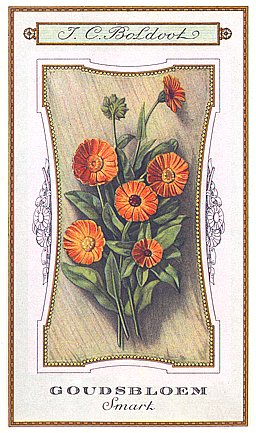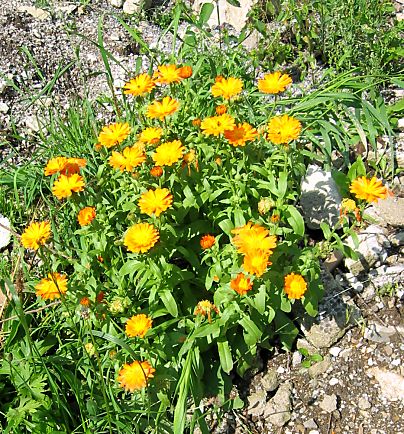


No. 7 - Goudsbloem - Marigold (Calendula officinalis) (Compositae)



Goudsbloemen, "ouderwetse" tuinplanten die men tegenwoordig veel minder ziet dan vroeger. De foto's op deze pagina maakte ik in Oostenrijk, waar ze min of meer verwilderd op een stenig, verwaarloosd stukje grond groeiden.
Waarom de Goudsbloem met smart wordt geassocieerd, is me een raadsel. De vrolijke oranje-gele composieten wekken bepaald geen verdrietige indruk. De plant is niet giftig, wordt integendeel als kruidengeneesmiddel gebruikt en zit vaak in handzalf, en de bloemblaadjes worden zelfs als eetbaar beschouwd, daar kan het 'm dus ook niet in zitten.
Marigold, an "oldfashioned" garden flower you don't see as often as a few decennia ago. These photos I took in Austria, where I found some growing more or less in the wild.
The Dutch word 'Smart' means "Sadness, grief". It has nothing to do with the English word "smart", which would be far more suitable for these bright orange-yellow composite flowers with their cheerful appearance. The plant is not poisonous, on the contrary it's used as a herbal medicine and is often a component of handlotions, and the petals sometimes are used in food - so this can't be the reason either for this negative meaning.Gedichten over Goudsbloem / Poems about Marigold :
The Marigold (by George Wither, 1588-1667)
Clemence Isaure - Kathinka Zitz (1801-1877) - (Duits / German) - "Ringelblume".




